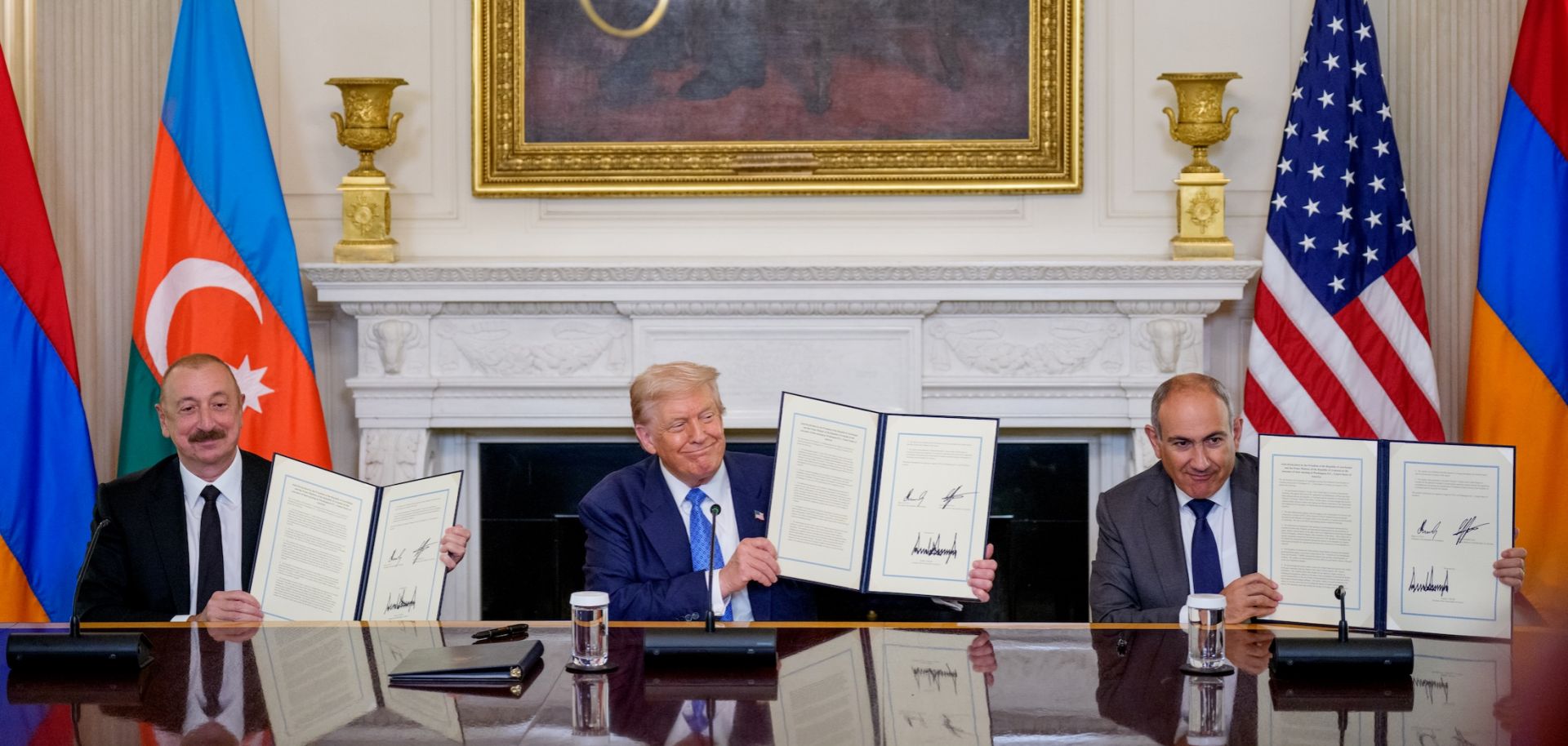A U.S.-brokered peace deal between Armenia and Azerbaijan has ushered in a strategic realignment in the South Caucasus by cementing Baku’s territorial gains, sidelining Russia and Iran, and planting a long-term U.S. commercial footprint in the region. But the treaty will remain fragile amid unresolved security guarantees and implementation challenges, and could unravel within the next 12-18 months. On Aug. 8, U.S. President Donald Trump hosted Armenian Prime Minister Nikol Pashinyan and Azerbaijani President Ilham Aliyev at the White House, where the three leaders issued a joint declaration outlining the outcomes of their trilateral summit. According to the declaration, the leaders witnessed the initialling of a draft peace agreement by the foreign ministers of Armenia and Azerbaijan, aimed at ending decades of conflict between the two countries. They also endorsed a joint appeal to terminate the OSCE Minsk Group and its associated mechanisms. Additionally, the joint declaration committed Armenia, the...

